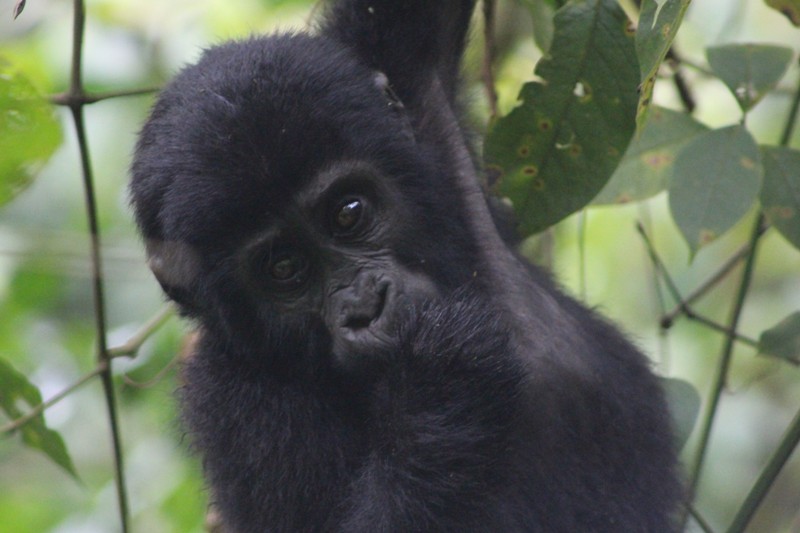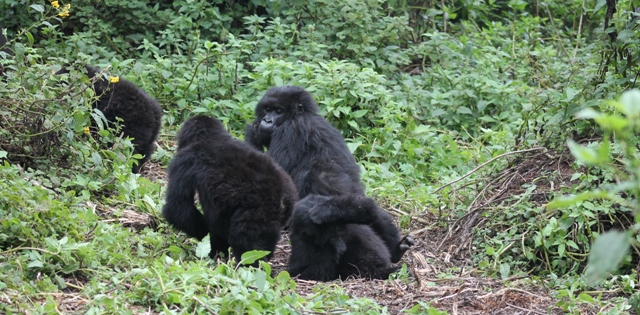Traveling within Uganda’s capital, Kampala City, can be cumbersome for a first time visitor in Uganda. The city does not have a well organized public transport system, leave alone a neat road network with proper signage. Good thing however is there is an abundance of ways by which you can get around the city. You can travel at any time of the day and night and reach any part of the city.
Below are the many ways by which you can get around Kampala.
Boda Boda (motorcycle taxis)
The motorcycle taxis, locally called “Boda Boda” or “Boda” is the most popular means of transport in Kampala and other towns of Uganda.
Boda boda are the quickest way to get around the congested Kampala. They are many and literally everywhere there is a road or path. They are available all through the night as well. They provide such convenience of travel, in that, as soon as you step out of your house, your wait will be a couple of minutes or even seconds before one is passing by and you can summon it to come over pick you.
There is no standard pricing system, the boda boda will charge you as he pleases, so it is good to have an idea of what a fair charge may be depending on the distance you will travel otherwise you will be taken advantage of. The first price for the shortest distance covered is 1000 Uganda Shillings. This can cover up to one kilometer. Hence, your estimate can be around 1000 x the distance you will cover. After your two or three boda boda rides (who will most likely overcharge you) you will start to understand the pricing better and how to negotiate for a better price. If you know a local person you can ask what they think a charge will be for going from one point to another so that you are better equipped to negotiate with the boda boda. Or, you can also ask any random local wherever you and they may give you an idea of the fair charge should be, or still help negotiate for you when a boda boda comes over.
Why you should think twice before taking boda boda
The boda boda are the most convenient mode of transport in Kampala and you can’t almost avoid them. However, the statistics are that there are 5 boda boda caused deaths in Kampala every single day. They are completely reckless, flaunting all traffic rules in the book, including riding in the opposite direction of traffic. They are the number one threat to safety in Kampala. Only take a boda boda when it is completely necessary and be very vigilant, do not allow the boda boda ride recklessly.
Safety is not a priority for the boda boda so a helmet not is provided. If you will be using the boda boda more frequently it is advised to purchase own helmet.
Boda Boda Apps (Motorcycle taxi apps)
Boda Boda ride Apps are the answer to the recklessness of the ordinary Boda boda above. Boda boda riders on riding Apps have gone through some orientation and training on safe riding. And unlike the above “free-range” riders, the App riders are regulated by the App companies, so in case of you issue on the ride such a theft you can follow up with the company.
The Apps determines the price depending on distance covered and time of the day. The App is normally cheaper for short rides/distances.
The downside to the App is that you have to wait a little longer as the app has to scan for the nearest available free rider. You could wait for as long as 20 minutes to get a rider available. Perhaps this is where the free-range boda boda beats the App, you can find a boda boda as soon as you stepped out.
The Bodaboda App companies in Uganda are:
- SafeBoda – this is the premier Boda boda App company and the best at that! Their riders are constantly trained, are easily identifiable with uniform and numbers and provide a second helmet for the passenger.
- UberBoda – the international taxi company has ventured into boda bodas well. A new entrant not as efficient as Safe Boda. Riders are not uniformed and no helmet for the passenger. However it is cheaper than Safe Boda
Minivan Taxis (matatu)
What we call “taxis” in Uganda are not the cabs, but 14-seater minivans or buses. They are widely called “Matatus” in the region, especially Kenya. These make up Uganda’s public transport system (or semblance of a public transport). They are easily identifiable on the road as they have a blue stripe on the side. The taxis originate from the taxi parking stations in the city center and ply all the roads out of the city to the City suburbs and out of Kampala. So if you want to travel anywhere, just stand by the roadside and wait for a taxi to come by and ask them for the destination the taxi is traveling to and if it is to the direction or destination that you are traveling to then you can board.
There is no standard charge unless if you are taking the taxi from the parking station. Otherwise, if you stop one already in transit you be charged any random fair, hence it is good to have an idea of how much it should be. Asking a local would help you establish the fair price so that you are not taken advantage of.
They are a cheaper and safer option than the Boda bodas. But you should not be in hurry when you board one because you will get in stuck in jam. You will also sacrifice on comfort as it can be congested and hot inside the matatus.
Car Apps
For better comfort and safety, you can download an app and order a cab. The most popular App is Uber. Others include Bolt (formely Taxify), SafeCar (a subsidiary of SafeBoda).
Taxi Cabs
Ordinary cabs can also be found at big shopping malls and streets. These may not be easily noticeable as they may not be marked, but you can ask around.
Walking
Kampala is a small city and is actually fun to walk. Most of the city suburbs are within 5 – 10km from the city center, so if you are fit enough you can walk to town. However note, much of the road network does not have walkways and the motorists (especially boda boda) do not respect pedestrians and walkway hence you have to be very vigilant when walking along the high traffic roads.

